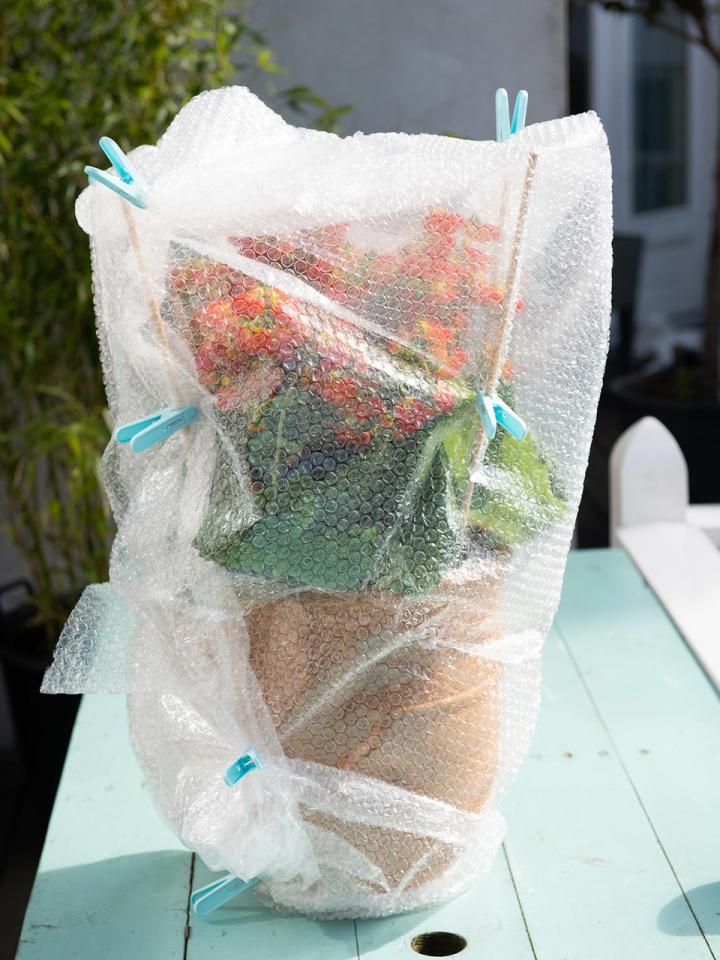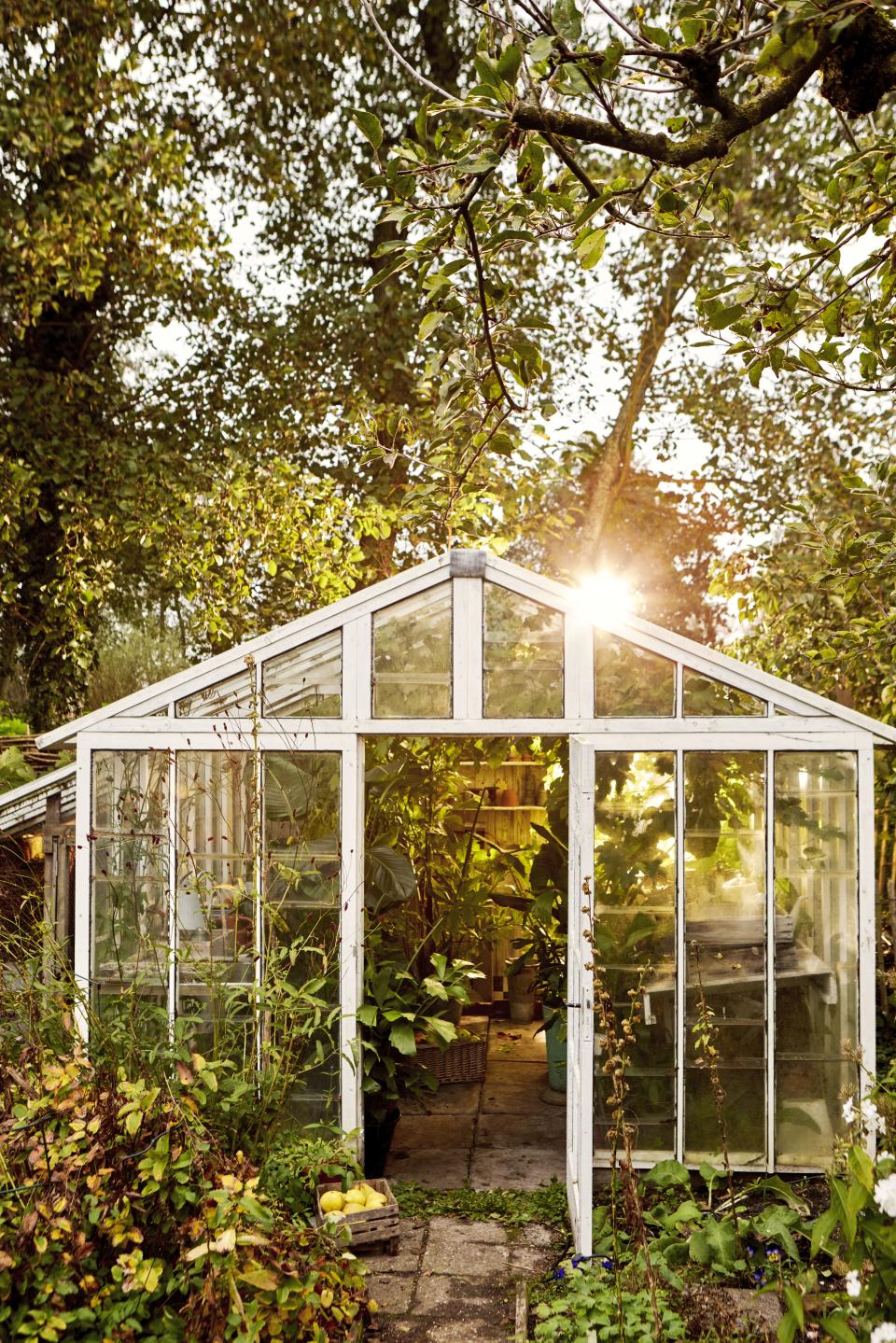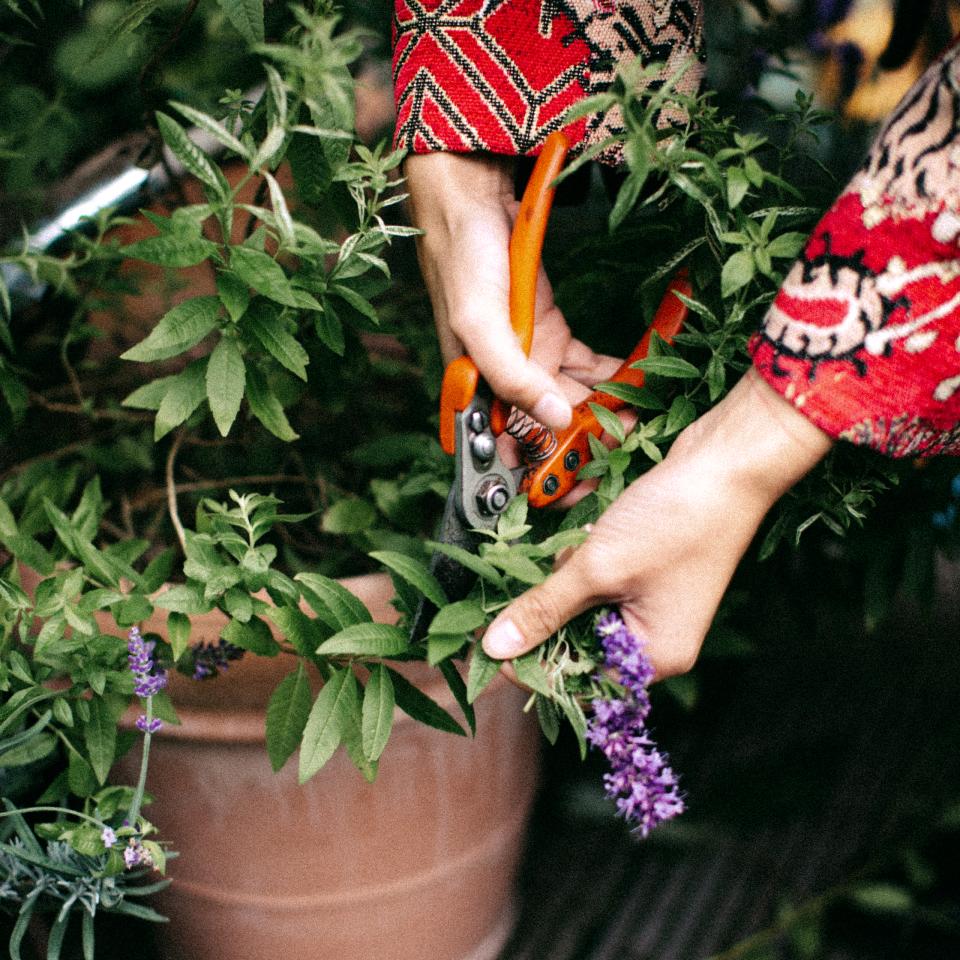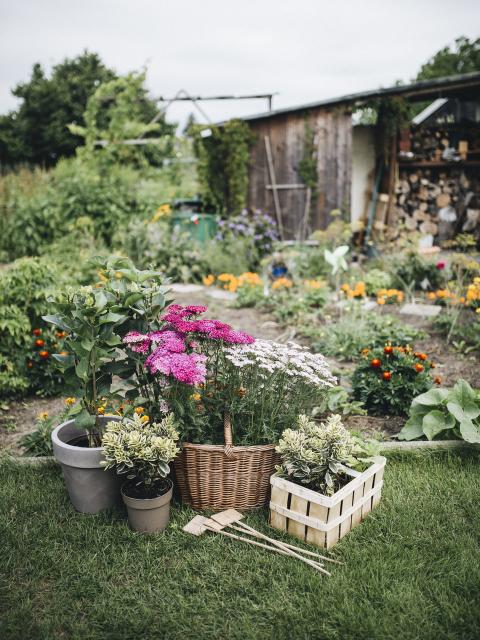What happens to plants when temperatures drop?
At low temperatures (around 0°C and below), water expands in the vascular bundles of plants. As a result, cracks form and the cells of the plants can snap, causing plants to die. For plants in pots, the risk of frost damage is usually higher than for plants in the open ground.
Hardy plants need no protection
Fully hardy plants, such as perennials, shrubs or conifers, can be simply left in place in winter and during periods of frost. This is because their roots can withstand frost, as can their above-ground parts such as leaves sometimes can as well. Some hardy plants do lose their leaves, but they come back in spring. Other hardy plants are evergreens (which retain their leaves in winter), making them an excellent source for greenery all year round.
Examples of hardy perennials
- Examples of hardy perennials: Lady's mantle, Sunflower, Hosta, Phlox, Rudbeckia and Sedum.
- Examples of hardy evergreen perennials: Bergenia, Iberis, Alumroot, Vinca and Blue fescue.
Examples of hardy shrubs and bushes
- Examples of hardy shrubs/bushes: Maple, Buddleja, Blue spirea, Snowball, Hibiscus, Lavender, Rose, Hydrangea and Woodland vine
- Examples of hardy evergreen shrubs/bushes: Boxwood, Rhododendron, Skimmia, Pieris, Hebe, Ivy, Photinia, Prunus and Euonymus.

Protecting moderately hardy plants from frost
Not all hardy or moderately hardy plants are created equal. Some can take more of a beating than others. Moderately hardy plants can be protected in several ways:
- Place a thick layer of leaves or leaf compost around the base of moderately hardy perennials.
- Keep shrubs out of the wind as much as possible and cover them with a reed mat or fleece. You can lay a blanket of leaves around the base.
- Is your moderately hardy plant in a pot? Put it in a sheltered spot (where it's well protected from the wind), preferably as close to your house as possible or under a canopy of some kind, as this will be warmer.
- Wrap potted plants warmly to keep them away from the freezing cold as much as possible. Bubble wrap is very suitable for this, acting like a nice warm coat. You can read how to do this in the step-by-step plan below. Save your bubble wrap from parcel deliveries for this purpose.
Examples of moderately hardy plants
Examples of moderately hardy plants are: Sage, Fuchsia, Verbena, Lampshade grass, Abelia, Hebe (shrub veronica), Buddleja, and Caryopteris (bearded flower).
How to protect plants from frost with bubble wrap
- Pick a plant that needs warmth, a few long sticks, garden shears, bubble wrap (or some plastic bags) and clothes pegs.
- Push the sticks around the plant into the soil to create a framework for the plastic to fit over.
- Place the pot on the bubble wrap or inside the plastic bag and drape it around the framework. To make sure everything stays tight, you can clamp the plastic to the sticks with some clothes pegs.
- Secure the wrappings over the top of the plant and secure everything with clothes pegs.

Protecting non-winter-hardy plants from frost
Non-hardy plants, such as Mediterranean garden plants and tropical garden plants, are not fans of the cold, rain and wind. They will therefore need protection when the cold sets in. Be sure to protect your plants before the first frost - prevention is always better than cure.
How to Overwinter non-winter-hardy potted plants
See our tips below for protecting non-winter hardy potted plants:
- Overwinter non-winter hardy potted plants indoors in a bright place (such as a greenhouse or conservatory) at a temperature of 5-10°C. Feeding them is not necessary, but give your plants an occasional drink of water so they don't dry out.
- If you don't have any indoor space to overwinter your potted plants, wrap the plant pot(s) in bubble wrap. This serves as insulation and protects the plant's roots from freezing. Extra tip: if possible, place the pots close together. This way, the plants offer each other extra protection and warmth.
- Non-hardy tropical potted plants such as Strelitzia and banana plant could stand to be moved fully inside the house during the winter months. Just make sure to keep the soil moist.
- Tip: watch out for stowaways when putting your outdoor plants inside. Check for bugs or any other inhabitants carefully.

How to Overwinter non-winter-hardy plants in the open ground
If you have non-winter-hardy plants planted in your garden, we suggest the following to protect your plant against cold and frost:
- Cover the plant (or tree) with a fleece or protective cover around its stem and branches. A protective cover or fleece is breathable, retains heat from the sun and offers the plant the right protection, greatly reducing your chances of frost damage.
- Covering with burlap bags is also possible. But make sure the burlap is not too heavy, as it could damage the plant.
- You can cover the base of the plant or tree with wood chips, a layer of leaves or straw. This increases the soil temperature while keeping the soil moist.
Examples of non-winter-hardy plants
Examples of non-winter-hardy Mediterranean and tropical plants that need help overwintering are: Citrus, Laurel, Olive, Oleander, Agapanthus, Chinese Rose, Solanum, Angel Trumpet, Peace Palm, Rosemary, Strelitzia and Banana plant. Most summer-flowering bulbs, such as Gladioli and Dahlias, are also non-winter-hardy. Read more about digging up and storing flower bulbs below.

How to dig up and store Summer-flowering bulbs for winter
In general, spring-flowering bulbs such as narcissi and hyacinths can stay in the ground in winter. Only tulip bulb are better off removed from the ground, as they dislike frost. For most summer-flowering bulbs, it's best to dig them up and store them in a dry place. Do this before the first frost sets in. You can replant the bulbs when the risk of frost has passed - usually this is around May. From July, the summer bloomers will shine in your garden once more.
A step-by-step plan for Removing flower bulbs from the ground
Do you have frost-prone, summer-flowering bulbs in your garden? Here's how to handle them.
- Carefully remove the bulbs from the soil with a spade.
- Clean the bulbs by carefully removing the soil from them.
- Inspect the bulbs and discard any that seem rotten, or look soft or damaged.
- Cut off the remaining stems to around 5 centimetres above the bulb.
- Store the bulb in a dry, cool and frost-free place (e.g. in a shed or unheated garage). Make sure they get enough oxygen. Store them in a paper bag or cardboard box, but not in a plastic bag or in plastic wrap.
- In late spring (after the chance of frost has passed), you can replant the bulbs.
Should you prune in autumn?
Some hardy plants can be pruned in autumn as it keeps them healthy, such as leafy shrubs. Trim them into shape or cut them back. Flowering shrubs are best pruned immediately after flowering. In addition, hedges can should be cut back in September. Use sharp secateurs to keep your green friends healthy. For information and tips on pruning, check out our guide here.

More planting tips for autumn and winter
Check out these 10 activities to get your garden ready for autumn and winter, discover which plants make your garden animal-friendly in autumn and winter and check out 9 beautiful autumn plants that will add colour to your garden during the colder months of the year.












